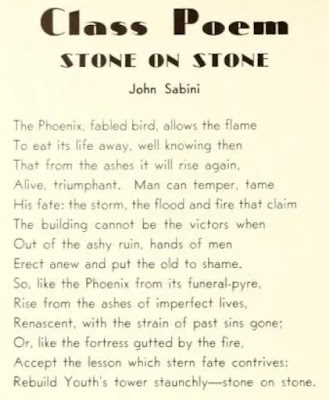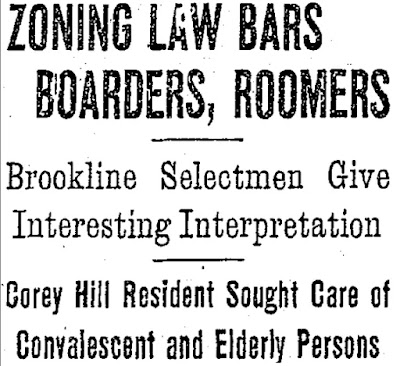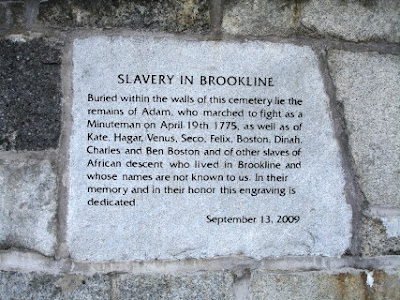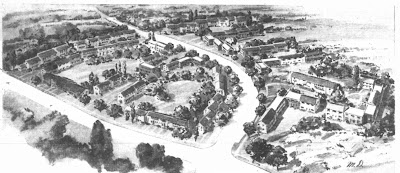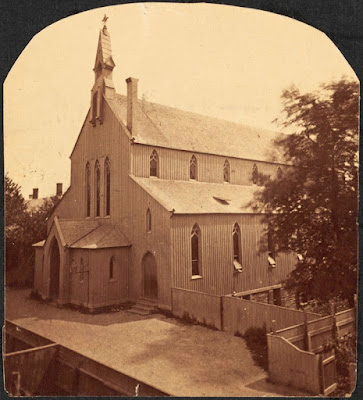 |
| September 24, 1854 |
September 24, 1854 - St. Mary’s on Andem Place dedicated
September 27, 1902 - Contagious Hospital buildings
September 26, 1906 - Planned Prohibition rally draws wrong crowd
September 25, 1936 - Brookline High School burns
September 24, 1854
St. Mary’s on Andem Place dedicated
Brookline's first Catholic church, St. Mary's of the Assumption, was dedicated in Brookline Village to serve the town's growing Irish population. The wooden church, shown at the top of this post, faced north with the entrance on Andem Place, now a back alley. The back faced the railroad station. (Station Street was not yet a street.)
"The good and zealous Catholics of Brookline have succeeded in erecting a beautiful Church in this thriving town," wrote a correspondent in the New-York Freeman's Journal and Catholic Register. "It is just completed in a style that does much honor to the Catholics of Brookline and their indefatigable Pastor, the Rev. Mr. O'Beirne...."
In 1888, five years after the current St. Mary's was built, the old church became the factory of the Holtzer Cabot Electric Company. The factory was expanded with a brick facade and brick addition around the old church structure. The wooden interior part that had been the church was destroyed in a 1911 fire, but the former factory building still stands.
September 27, 1902
Contagious Hospital buildings
Contagious Hospital buildings
Brookline residents were invited to inspect the town's newly-constructed Contagious Hospital on Newton Street prior to its opening for patients with diphtheria and scarlet fever. The four-building complex consisted of separate wings for each of the two diseases and administration buildings with nurses quarters and other facilities.
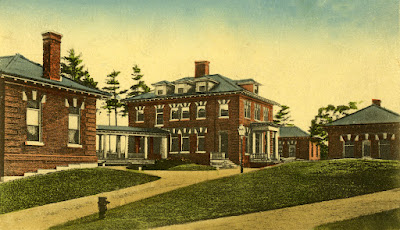 |
| Postcard view of the Brookline Contagious Hospital |
The patient facilities were designed to provide natural light and air. There were separate patient areas for men, women, and children. In total, the facilities could accommodate as many as 100 patients at a time.
The hospital, which added wards for tuberculosis patients in the 1930s, later focused primarily on that disease. It was closed in 1954 as new treatments for TB were developed, with patients transferred to the Norfolk County Tuberculosis Hospital. The hospital buildings were demolished. The site was later developed with condominiums on a new road, Fairgreen Place.
September 26, 1906
Planned Prohibition rally draws wrong crowd
A gas lantern attached to a tree in front of the Baptist Church in Brookline village attracted a crowd, but not the crowd the planners of a Prohibition rally intended. Instead, a reported 200+ children filled the space around the church, no doubt expecting something else.
Planned Prohibition rally draws wrong crowd
A gas lantern attached to a tree in front of the Baptist Church in Brookline village attracted a crowd, but not the crowd the planners of a Prohibition rally intended. Instead, a reported 200+ children filled the space around the church, no doubt expecting something else.
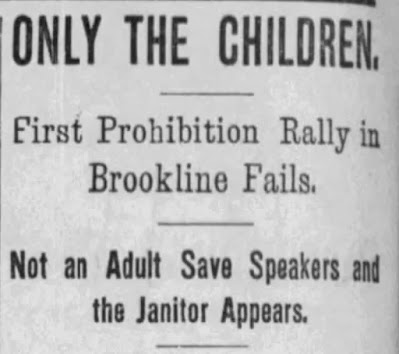 |
| Boston Globe headline, September 27, 1906 |
The rally, advertised in the windows of local stores, failed to attract a single adult, according to the Boston Globe. The speakers proceeded nonetheless, reported the paper, "with a discourse, touching on religion, politics and the trusts."
"The little folks waited patiently for a time, fully expecting that the pleasant faced gentleman would say something for them to laugh at, but this was not the speaker's intention," continued the Globe. "His youthful listeners waited some more, and then gave vent to their disappointment by becoming extremely noisy."
Police stepped in and "sent the youngster scampering home." Brookline, which had prohibited local sales of alcohol since 1887, remained -- despite the turnout -- firmly in the camp of those favoring national Prohibition, which would finally be instituted 14 years later.
September 25, 1936
Brookline High School burns
Brookline High School burns
 |
| A crowd watches as the main building of Brookline High School burns (Boston Globe photo) |
The oldest section of the Brookline High School building, erected in 1895, was destroyed in a spectacular fire that began in an incinerator chimney. The fire and the efforts of firefighters to extinguish it were captured on newsreel footage.
An investigation determined that the fire had been smoldering in attics under the building's roof for 36 hours before it was discovered. It took two years for new structures to be completed on the site to replace the building that was destroyed. The new buildings were given special fire protection, including a sprinkler system, vacuum pumps in the basement, and alarm connections to the town's fire department.
The 1938 BHS yearbook, the Murivian, featured a class poem by senior John Sabini that portrayed the school, like the Phoenix, the bird of classical myth, rising from the ashes.


